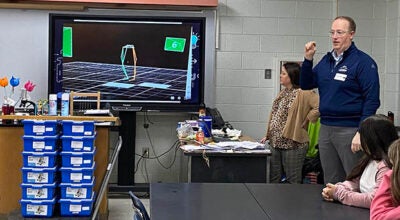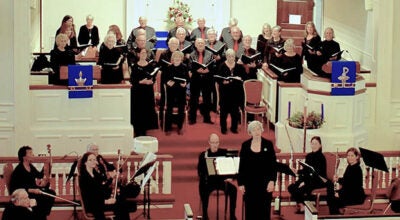Setbacks for solar facilities amended
Published 8:52 pm Friday, July 2, 2021
|
Getting your Trinity Audio player ready...
|
The Charlotte County Planning Commission unanimously voted to amend the zoning ordinance for setbacks and to require community meetings when it comes to large-scale solar facilities.
The newly amended section of the zoning ordinance calls for a minimum setback of 125 feet from the center line of any state maintained road abutting the property; a minimum setback of 75 feet from all other property lines with the exception of those property lines that are inside the project’s boundaries and which do not abut property located outside the project area; and a minimum of 400 feet from all off-site residential structures unless otherwise prescribed by the Board of Supervisors (BOS) as a condition of approval for a Conditional Use Permit.
The vote came on Tuesday, June 22, following a public hearing on the matter.
The issue was brought to the planning commission in response to comments received regarding several conditional use permit applications for solar projects.
According to county documents, the Planning Commission determined there was a need to consider amending the zoning ordinance to require utility-scale solar project applicants to conduct a community meeting prior to review of the project.
In addition, the BOS requested that the Planning Commission review zoning requirements for utility-scale solar development setbacks and buffers.
During the meeting, the Planning Commission recommended making no changes to the established screening buffers stating they were in line with other counties.
There were those localities that had greater buffers/setbacks and those that had less.
In an email to planning commission members, Supervisor Kay Pierantoni, who also serves as the planning commission representative on the BOS, said she believed one of the most important aspects of a project is the buffers.
“Yet buffers have not been defined or increased in any way,” Pierantoni said. “This is a difficult task to undertake but so important for the future of our county. Perhaps solar projects would be more favorably received if adjoining property owners and the public could have greater assurance of visual obscurity.”
During many discussions among the BOS, some members, Pierantoni included, have mentioned that some planning commission members have not done their job in researching the issue.
“A few of the board members have spoken out and voiced their opinions that the setbacks and buffers should be more,” County Administrator Dan Witt said. “The recommendation from the Planning Commission is just that, a recommendation, and the ultimate decision for any changes to the solar ordinance is up to the Board of Supervisors.”
During the public hearing, while most who addressed the commission were in favor of the solar project, one Saxe resident, Rodney Moon, pointed out his concern for his community and neighbors while taking the opportunity to inform the commission of one incident he had encountered.
“A couple of weeks ago, I came in contact with one of the guys on the Planning Commission, and he told me that this project was coming no matter what, and there was no way it could be stopped,” Moon said. “This member also told me that this project was so important that the governor would send the National Guard to come to shove it down our throats if need, and he also said if I didn’t like it, I needed to move.”
Moon did not say who that planning commissioner was, nor did anyone from the commission comment following Moon’s address.
Those who did speak in favor of the solar projects said they were in favor because of the income the project would potentially bring to the county, thus helping reduce taxes.
“I can’t afford to pay anymore … we need some relief,” J. A. Devin said. “There is no reason for Charlotte County taxes to be 24 cents higher than Mecklenburg (County).”
Currently, the county has received an application from SolUnesco for an 800 megawatt (MW) solar facility to be located in the Randolph area.
SolUnesco CEO Francis Hodsoll said under the solar revenue share, the Randolph project will pay Charlotte County an additional $1.5 million in taxes in the first year of operations and $113.7 million from the project, assuming a 50-year operational life.
The zoning ordinance amendments now fall to the BOS to make the final decision.




